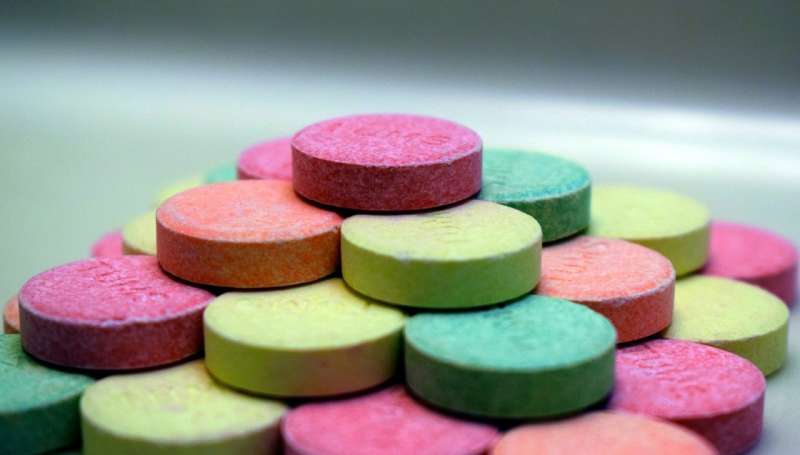This article has been reviewed according to Science X's editorial process and policies. Editors have highlighted the following attributes while ensuring the content's credibility:
fact-checked
reputable news agency
proofread
Consumer Health: What's the difference between heartburn and GERD?

Heartburn—that burning pain in your chest after eating certain foods or when you lie down in the evening—is a common complaint and usually no cause for alarm. Heartburn occurs when stomach acid backs up into the esophagus, which is the tube that carries food from your mouth to your stomach.
Most people can manage the discomfort of heartburn on their own with lifestyle changes, including maintaining a healthy weight and avoiding smoking, alcohol and foods that trigger your symptoms; and nonprescription medications, such as antacids.
When heartburn occurs repeatedly over time and interferes with your routine, it's considered gastroesophageal reflux disease, or GERD. Approximately 20% of the people in the U.S. have GERD, according to the National Institute of Diabetes and Digestive and Kidney Diseases.
The constant backwash of acid with GERD can irritate the lining of your esophagus, often causing it to become inflamed. Over time, chronic inflammation in your esophagus can cause serious damage, including narrowing of the esophagus, called esophageal stricture, or the precancerous changes of Barrett's esophagus.
In addition to heartburn, symptoms of GERD can include:
- Upper abdominal or chest pain
- Trouble swallowing
- Sensation of a lump in your throat
- A chronic cough
- Inflammation of the vocal cords
- New or worsening asthma
With GERD, your health care professional is likely to recommend that you first try lifestyle changes and nonprescription medications—similar to the treatment recommendations for heartburn. And with both conditions, if these measures aren't effective, there are prescription medications that may be recommended.
Surgery and other procedures for GERD
If medications don't help with GERD, or you wish to avoid long-term medication use, your health care team may recommend:
- Fundoplication. With this procedure, the surgeon wraps the top of your stomach around the lower esophageal sphincter, to tighten the muscle and prevent reflux. Fundoplication is usually done with a minimally invasive laparoscopic procedure.
- LINX device. With this procedure, a ring of tiny magnetic beads is wrapped around the junction of the stomach and esophagus. The magnetic attraction between the beads is strong enough to keep the junction closed to refluxing acid but weak enough to allow food to pass through. The LINX device can be implanted using minimally invasive surgery. The magnetic beads do not have an effect on airport security or MRI.
- Transoral incisionless fundoplication. This new procedure involves tightening the lower esophageal sphincter by creating a partial wrap around the lower esophagus using polypropylene fasteners. Transoral incisionless fundoplication is performed through the mouth by using an endoscope and requires no surgical incision. Its advantages include quick recovery time and high tolerance.
2023 Mayo Clinic News Network.
Distributed by Tribune Content Agency, LLC.





















